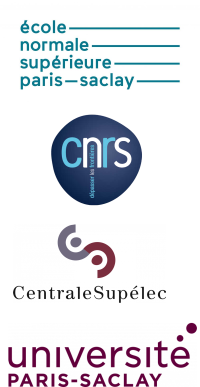Principal Investigators: E. Cassette (CNRS researcher)
We are interested in investigating the ultrafast relaxation and recombination of excitons and charge carriers in colloidal semiconductor nanostructures. Over the last 10 years, our research focus on 2D nanostructures of semiconductor materials with atomically-controlled thicknesses: colloidal nanoplatelets and nanosheets (II-VI chalcogenides, halide perovskites, TMDs). Now we develop new strategies to investigate energy and charge transfer processes in hybrid assemblies and heterostructures of such 2D nanoplatelets.
- Ultrafast Spectroscopy

We develop time-resolved optical spectroscopies to investigate the dynamic of excitons and charge carriers in colloidal semiconductor nanostructures. We use a home-made femtosecond transient absorption apparatus on an amplified kHz TiSa laser source. We can play on several parameters to understand the mechanism of different ultrafast processes: excitation energy and fluence, temperature, external electric field, etc…
- Halide perovskites: nanocrystals and 2D nanoplateletsafast Spectroscopy

We have investigated the hot exciton relaxation and Auger recombination in 2D nanoplatelets and weakly confined nanocrystals of halide perovskite [1,2]. We applied global analysis method to extract the exciton/charge carrier cooling rate. We studied the effect of confinement and excitation fluence (phonon bottleneck effects). Finally, we observe exciton multiplication in perovskite nanoplatelets of 3 monolayers after UV excitation [1]. Now we are interested in studying the effect of external electric fields in the emission of such 2D pervoskites.
[1] C. Villamil Franco, B. Mahler, C. Cornaggia, T. Gustavsson, and E. Cassette, ACS Appl. Nano Mater. 2021 4 (1), 558-567.
[2] C. Villamil Franco, B. Mahler, C. Cornaggia, T. Gustavsson, and E. Cassette, Nanomaterials 2020, 10(10), 1897.
- II-VI semiconductor nanostructures

Previously, we have investigated the ultrafast dynamics of core-crown and core/shell heterostructure of 2D nanoplatelets of II-VI semiconductor materials [3,4]. We now want to control the electronic coupling between nanoplatelets assemblies or charge transfer in their heterostructures of type II alignement (spatial separation of the electron and hole wavefunctions). In particular, we want to play on the exciton delocalization and charge transfer character by playing on the external temperature and electric fields applied within or perpendicular to the 2D plane.
[3] E. Cassette, S. Pedetti, B. Mahler, S. Ithurria, B Dubertret, G.D. Scholes, Phys. Chem. Chem. Phys., 2017,19, 8373-8379.
[4] E. Cassette, R.D. Pensack, B. Mahler, G.D. Scholes, Nat. Commun. 2015, 6, 6086.
- Collaborators
B. Mahler (CNRS researcher), iLM, France: films of CdSe/CdZnS quantum dots in MAPbBr3 perovskite matrix; colloidal WS2-WSe2 in-plane heterostructures, 2D semiconductor nanoplatelets (halide perovskite and II-VI semiconductors).
- CV E. Cassette
2021-present: CNRS researcher at LuMIn, Université Paris Saclay, France
2016-2021: CNRS researcher at LIDYL, CEA Saclay, France
2015-2016: Postdoctoral researcher, Princeton University, USA
2012-2014: Postdoctoral researcher, University of Toronto, Canada
2012: PhD in Physics and Chemistry of Materials, LPEM, ESPCI, France
1986: Born in Paris (XI°), France
Research grants:
- Agence Nationale de la Recherche (ANR-16-ACHN-0022-01)
- Université Paris-Saclay


